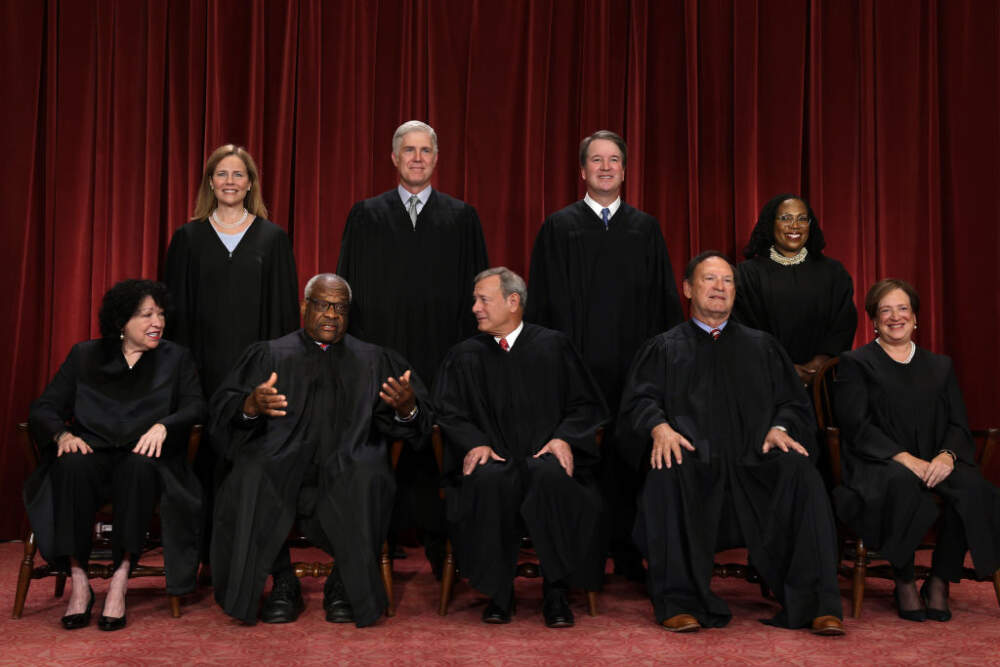Advertisement
Commentary
America is purple. Our Supreme Court is red. Here's how to fix it

As June comes to a close, and we await to see the Supreme Court’s biggest decisions of the term, reform is on the mind. After all, the Supreme Court is suffering “multiple organ failures” a prominent legal journalist told me recently. He’s right. The Court has a justice effectively on the payroll of a right-wing billionaire. Major opinions are leaked and the Court cannot discover or will not disclose the leaker. The conservative super-majority has reneged on decades-old promises (and precedent) to protect abortion rights, constrain gun violence and maintain a separation between church and state.
The Supreme Court is out of step with America. Sixteen of the last 21 justices were appointed by Republican presidents. Meanwhile, Democrats have won the popular vote in every presidential election but one in the last 30 years. We have a bluish-purple country. But the Court is blood red.
Many ideas for reforms have been trotted out. Here’s one that has yet to be considered: a minimum age for justices.
I have been a student of the Supreme Court for more than three decades and in that time, I have never known the Court to command less respect than it does now. Even surprising opinions, like the recent ruling in a voting case from Alabama — in which Chief Justice Roberts and Justice Brett Kavanaugh voted with the liberals to strike down an obvious racist gerrymander — do little to repair its legitimacy. Like an abused dog, I experienced that ruling as the pat on the head before the next kick.
There’s no shortage of possible reforms. Expand the Court. Impose ethics reforms. Strip the Court’s jurisdiction to hear certain kinds of cases.
The most popular proposal is to impose staggered 18-year term limits on justices. The genius of such limits is that each president would get two appointments between each election. Over time, the Court would correspond more closely with the political and constitutional views of the country.
A difficulty with term limits is that they would require a constitutional amendment. Article III allows justices to hold their office “during good behavior.” Apparently that “good behavior” requirement doesn’t have sufficiently sharp teeth to keep Clarence Thomas from accepting free vacations. But the provision has been taken to mean that justices serve until they resign or leave in a box. A term limit would conflict with this, and we have the world’s toughest constitution to amend. (The last amendment to win ratification, the 27th, was endorsed by Congress in 1789. It was approved by states in 1992 — over 200 years later. It’s not an easy thing.)
Can you think of an issue that would win agreement from two-thirds of both houses of Congress and three-fourths of all state legislatures? I can’t.
Advertisement
But no constitutional amendment would be necessary for Congress to require that justices be over a certain age at appointment. The constitution may require that justices serve for life, but the constitution is silent about when they can start. Compare that with the requirements that the president must be 35 years old, senators 30, and representatives 25. No statute could change those. But if Congress wanted to say a justice had to be of a certain maturity to be appointed, it would face no constitutional bar.
A minimum age requirement would achieve many of the same benefits of term limits. No one lasts forever, and a Court of AARP-eligible members would always be in actuarial flux. Recent experience suggests that many justices look for an off-ramp in their late 70s or early 80s. Stephen Breyer resigned at 84; Anthony Kennedy at 82; David Souter at 70; Sandra Day O’Connor at 76.
No one lasts forever, and a Court of AARP-eligible members would always be in actuarial flux.
I think 60 is the right minimum age. I say that not just because I am (barely!) above that threshold. The Court is supposed to be the adult in the room. It would be best if they were — dare I say it — wise. And the ability to see nuance and shades of gray is a feature rather than a bug of good judging. Maturity is important. I eagerly concede that maturity does not always correspond with age — we all have that uncle — but it is not a bad guideline.
Presidents have long tried to cement their influence on the Court by nominating young, relatively inexperienced jurists. Clarence Thomas won his seat at 43, and he has been an anchor on the right for three decades.
Trump’s three appointments — Neal Gorsuch, Brett Kavanaugh and Amy Coney Barrett — were 50, 53 and 48 at the time of their appointments and will likely leave Trump’s fingerprints on the Court until mid-century. Obama and Biden followed suit — Sonia Sotomayor was 55 when she was appointed, Elena Kagan was 50 and Ketanji Brown Jackson was 52.
Both GOP and Democratic presidents set aside potential nominees with more seniority — and more wisdom perhaps? — because of that seniority.
Neither party will unilaterally disarm. Absent reform, the effort to appoint ever-younger justices will persist. But a bipartisan plan to establish a minimum age could actually gain traction on both sides of the aisle, and over time, help to repair the Court.
